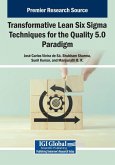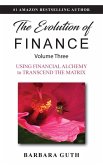The liberal international financial order, built on dollar dominance, integrated markets, and centralized governance, is under increasing strain. A profound transformation in the logic and architecture of global finance is going on, determined by four interrelated forces - deglobalization, decentralization, dedollarization, and the resurgence of gold - as the cornerstones of a new financial paradigm. What should be the new projection of International Finance or at least of International Trade Finance is a matter of times? Globalization does not end; it has evolved and will continue to evolve for the foreseeable future. Support for globalization by developing countries will become an important counter to the deglobalization promoted by some developed Western countries. Decentralization in international finance and payments has the potential to democratize the financial system by granting greater autonomy to participants, reducing costs, and increasing transaction efficiency. Decentralized financial technologies may reshape the financial system by offering users more control and independence while managing risks and challenges. The role of the US dollar, established after the Second World War, is under threat from new economic blocs that have launched alternative platforms for trade and investment. While the U.S. dollar remains the dominant global currency, a multi-polar financial landscape is emerging. Although gold no longer plays a direct role as a currency, it remains a significant asset in the global financial markets and as a value tool. Gold remains a fundamental asset of protection and digital assets - a tool for growth, accessibility and transformation in the financial markets. Historically trade finance has tended to be highly vulnerable in times of crises. After the Great financial crisis of 2008-2009, the need and the issue of trade finance re-emerged as a matter of urgency.
Bitte wählen Sie Ihr Anliegen aus.
Rechnungen
Retourenschein anfordern
Bestellstatus
Storno








